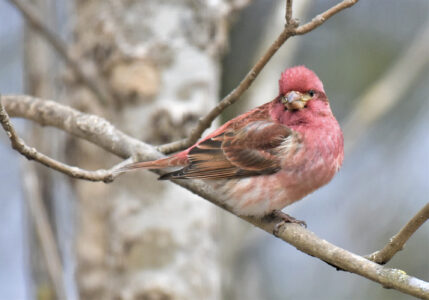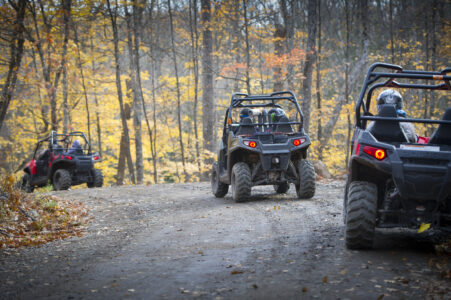Outdoors report: Sagola club offers annual sight-in day for deer hunters

The Michigan Department of Natural Resources is proposing to expand both elk hunting periods in the northern Lower Peninsula, more than doubling the total harvest time from 21 to 45 days. For the 2025 Michigan elk hunting season, there were 260 licenses available. A total of 180 elk were harvested in 2024. (Michigan Department of Natural Resources photo)
IRON MOUNTAIN — Sagola Township Sportsmen’s Club will hold its annual sight-in day Friday, Nov. 14, ahead of the Michigan firearm deer season opener.
Starting at 7 a.m., the 100-yard rifle range will be manned by certified instructors. Targets and assistance will be provided free of charge until 1 p.m.
The club is 3.5 miles north of Channing off of Sawyer Lake Road.
For more information, contact Tony Erickson at 906-396-1119.
***
Wisconsin hunters harvested 3,724 bears during the 35-day season this fall, on par with the five-year average of 3,800 bears annually, according to preliminary information from the Wisconsin Department of Natural Resources.
“Reports from the field seemed variable this year,” said Randy Johnson, DNR large carnivore specialist. “Some hunters reported this was one of the best years of bear hunting they’ve experienced, while others were challenged by abundant acorns and corn, reducing the effectiveness of their baits. Bear hunters across the state also faced below-average temperatures in the beginning part of the season, followed by above-average temperatures towards the end of the season, each of which can affect bear activity. Overall, hunter success rates ended up slightly below average, translating to overall bear harvest right about where we anticipated.”
In Zone B in northeastern Wisconsin, the hunter success rate was 52% as 841 bears were taken. The harvest target was 900.
Statewide, hunter success was about 28%, slightly below the five-year average hunter success rate of 32%. Hunter success rates in individual zones varied from as high as 69% in Zone A in the northwest to less than 10% in southern Zones E and F.
Hunters wishing to obtain a license or preference point for the 2026 season must apply in Go Wild or at an authorized license agent before the Dec. 10 deadline. State law requires bear permit applicants to apply at least once during any period of three consecutive years to retain their accumulated preference points; otherwise, all accumulated preference points will be lost.
Over 146,000 people applied for a bear hunting license or preference point for the 2025 season, an all-time high. A total of 13,110 licenses were awarded through the license lottery system.
The season ran from Sept. 3 to Oct. 7.
***
Michigan elk hunters would have longer harvest periods for the 2026-27 hunting cycle under draft proposals by the Michigan DNR.
The proposals would lengthen both elk hunting periods in the northern Lower Peninsula, home to Michigan’s elk herd.
— Hunt Period 1 would run from the second Saturday in September through the second Sunday in October — a 30-day, continuous period. Currently, Hunt Period 1 is broken up into three, four-day hunts stretching across August and September — 12 total hunting days.
— Hunt Period 2 would run from Dec. 1 through Dec. 15 – a 15-day period. Currently, Hunt Period 2 runs from Dec. 13 through Dec. 21 — a nine-day period.
Combined, the two hunting periods would provide 45 total days of harvest time, more than double the current 21 total days of harvest time. The proposals, which do not affect the 2025 elk hunting season, must be approved by the Michigan Natural Resources Commission.
In addition to making Hunt Period 1 longer and continuous, the change would move the period later in the season when the weather is generally colder.
Final proposed elk regulations and elk license quotas for 2026-27 will be presented to the Michigan Natural Resources Commission at its March 2026 meeting. Final regulations will be adopted at the April 2026 NRC meeting.
***
The Michigan DNR’s weekly fishing report will be suspended after this week, resuming early next year when ice fishing picks up. The DNR reported this Upper Peninsula activity:
Little Bay de Noc: Yellow perch anglers reported fair to good fishing. They fished near the narrows, using perch rigs baited with minnows, and were either drifting or using spot lock to hold their position over schools of perch. Walleye anglers were primarily trolling or casting artificial baits. Reports were mixed, with some anglers struggling to find success, while others were able to catch a few. Anglers reported targeting the head of the bay and other deep structures in the upper bay. Those who trolled reported the best success during the dark hours.
Big Bay de Noc: Anglers in the garden area were primarily bass fishing. Anglers fishing along drop offs used a combination of trolling motors and wind to allow the boat to be fished parallel to the drop off. Moving slowly enough to ensure lures were fished near the bottom was key. Some anglers used live bait such as sucker minnows; others were drop shot fishing and using goby or minnow-shaped soft plastics.





